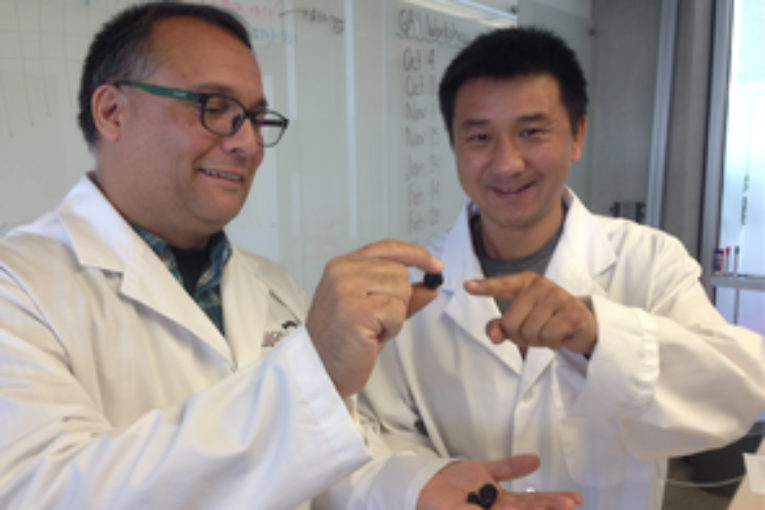
Assuming it works as researchers at the University of Calgary have demonstrated in the laboratory, Ian Gates’ self-sealing bitumen balls represent a potential breakthrough for Alberta’s energy sector as it struggles to get product to market and compete for investment dollars.
“This started in our lab as basically an accident that grew into a meaningful thing,” said the Schulich School of Engineering professor.
“We now have several companies we are talking to about moving this forward.”
By November, Gates said the patented and fully-automated technology will produce “pebbles of bitumen” in large quantities, hopefully providing a pipeline-free solution for Alberta crude to reach markets in a cheap and sustainable manner.
“In terms of the manufacturing of the pellets, we are now at a point where the technology from a fundamental point of view and what we do at the university is mature and where, reproducibly, when we do our process, we produce day in and day out a pellet-like product,” he said.
“We are going to build a one-barrel-per-day unit, going from our super-small scale to that. That will resolve a lot of the scale-up issues we are probably going to face…By one year the goal is a several-hundred-barrel-per-day unit to produce this.”
Researchers developed the process to make pellets of varying sizes at the wellhead, using roughly the same energy as it takes to dilute bitumen for liquid transport. While this is not the first attempt to create a solid form of bitumen, Gates said his technology means pellets can be rapidly produced without polymers or other additives, and without the need for complex equipment like microwaves.
“The wonderful thing about bitumen and heavy oil is you can polymerize it. You can cause asphaltenes to polymerize it. It is the feedstock for doing exactly that, being hydrocarbon based. In doing so, we can essentially produce the skin or the coating with no polymers.”
He added: “We would like to supply a product that together with the light end and the solid is exactly what you had originally. That is what we want to provide.”
Although he would not divulge many details as to the process itself, Gates said that a lot of the equipment used for the process is based on kitchenware re-engineered and redesigned from an industrial perspective. The process makes two products, including the solid material that can be transported easily in a standard railcar, as well as a 40 degree API oil that makes for good feedstock for lubricants or even as a solvent for bitumen.
“We can’t tell you everything, but what we will say is that essentially the process does not require any additives in serious quantity, and so it doesn’t rely on polymers or huge amounts of solvent. It basically uses heat, which causes it to create a coating on the pellets. This is then the seal that holds the bitumen or heavy oil within. We build them deliberately rough, which helps keep them from sticking to each other.”
Each unit is designed for mobility and minimal physical footprint. As an example, Gates envisions small producers using the technology to essentially produce both a solid and light oil product, one of which could be trucked away in a typical tank, while the other could be moved on a standard open truck with a cover — a useful option for producers lacking easy, plentiful transport options for their bitumen or heavy crude.
“If the product you desire is dilbit, then this is not for you. If you want to use pipeline, then you would not put this into a pipeline. If you have your established supply chain, then you wouldn’t use this.
“However, for those small heavy oil producers who don’t have a pipeline near their plant and they want easy transport, they could see these units sitting on the wellhead, basically producing solid product they would then essentially put into a truck or railcar and safety transported anywhere on the planet.”
You can read more of the news on source
